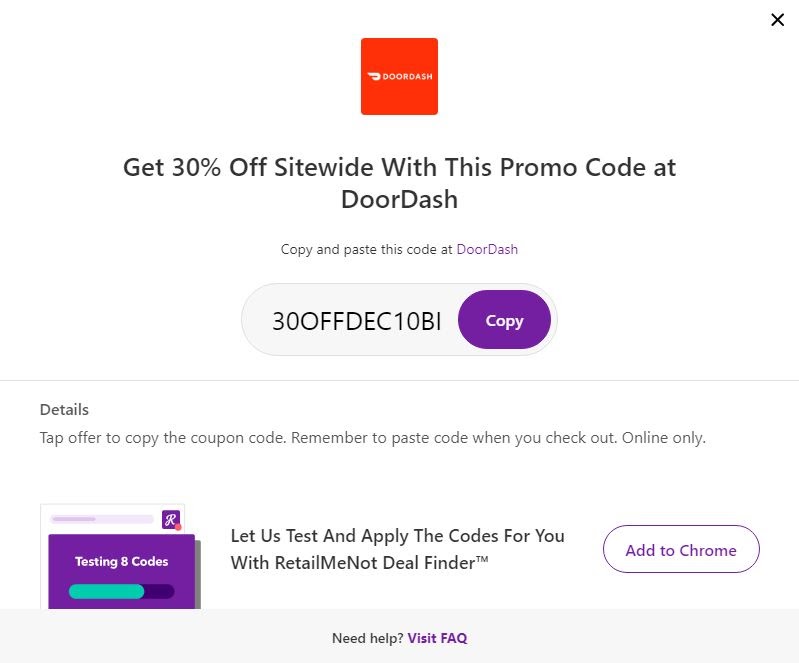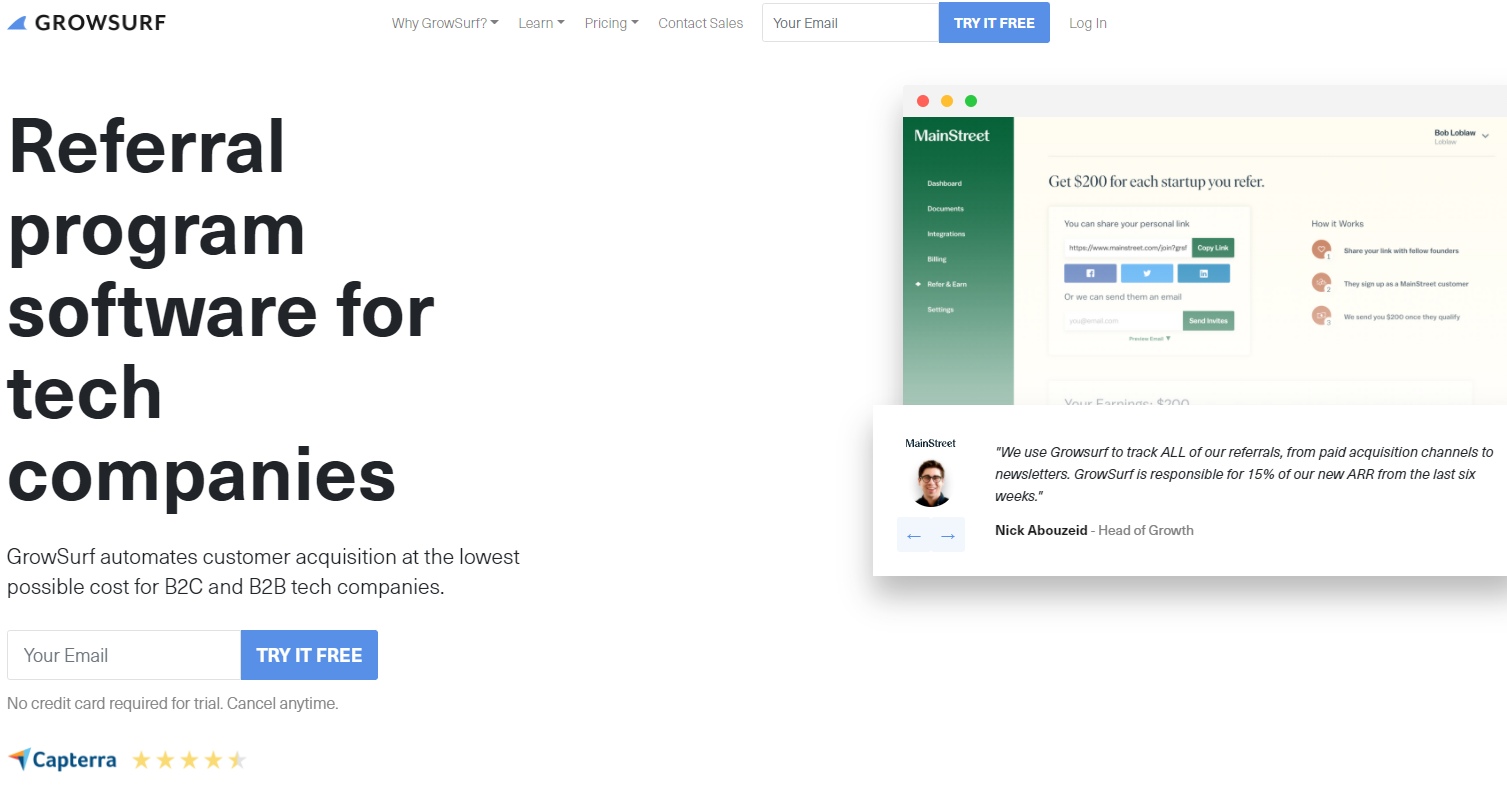Put your growth on autopilot
GrowSurf is modern referral program software that helps product and marketing teams launch an in-product customer referral program in days, not weeks. Start your free trial today.
Once you've decided to launch your first referral campaign, the next critical step is to set up a robust referral tracking system. This will allow you to accurately monitor the performance of your program, reward advocates properly, detect fraud, and optimize for better results.
By creating a comprehensive referral tracking system early on, you can:
In this comprehensive guide, we will cover:
Referral tracking is the process of monitoring and collecting comprehensive data at every stage of your referral program. This includes tracking:
An effective referral tracking system follows the entire customer journey - from when an advocate first shares, to when their referral converts into a paying customer. This granular data allows you to accurately measure your program's performance, optimize weak points, and reward your top referral sources.
There are two main approaches to tracking referrals:
We'll cover the pros, cons, and specific tactics for both manual and automated referral tracking methods in this guide.
Implementing a robust referral tracking system is critical for several reasons:
Without proper tracking in place, you'll be operating your referral program blindly - unable to evaluate its true impact, spot issues, or make data-driven improvements.
Other than that, we’ll cover 6 more reasons you should track your referrals:
Referral fraud is an unfortunate reality that even the best referral programs need to guard against. Common types of fraud include:
Before investing significant resources into scaling your referral program, it's crucial to have a reliable tracking system that allows you to:
Robust referral tracking combined with fraud detection capabilities (which reputable referral software provides) creates a secure foundation for sustainable program growth.
Having the power of anti-fraud controls is essential to protecting your program's integrity and ROI as you scale.
There are 4 types of common referral fraud to watch out for:
Account Cycling: The referral participant gets people to sign up using their link or code, then return the product once the reward has been fulfilled.
Exploitation: An unknown user somehow manages to find an exploit within your system and is able to receive rewards without completing the referral process.
Self-Referrals: As the name suggests, in this form of referral abuse, the participant simply refers themselves rather than a genuine network of friends and family.
Broadcasting: When your referral participants attempt to become affiliates. Rather than sharing their invite link or code with their personal network, they share it on coupon sites.
You can read more about referral fraud by clicking here.
Your referral sharing rate is the percentage of advocates actively participating in your program by sharing referral links or codes. This metric allows you to gauge overall engagement and identify areas to improve motivation.
For example, if only 30 out of 100 enrolled advocates have shared in the last month, your sharing rate is 30%. Anything below 10-15% is generally considered quite low.
To calculate: Sharing Rate = Number of Sharing Advocates / Total Enrolled Advocates x 100
To boost low sharing rates, it's also important to understand which channels your advocates prefer for sharing. Do they tend to share more via email, social media, messaging apps, or something else? With this data, you can:
Making it as easy as possible to share on the platforms your advocates use most can significantly increase referral program participation.
Beyond overall sharing rates, referral tracking allows you to monitor participation and engagement at the individual advocate level. This helps you:
If you notice dips in participation after launching a new promotion or update, you can course-correct quickly before it impacts your entire program's performance.
Sign up for a free trial of GrowSurf to lower your customer acquisition costs, increase customer loyalty, and save gobs of time.

One of the most powerful insights referral tracking can provide is a pulse on customer satisfaction and brand loyalty. After all, your happiest customers are the ones most likely to enthusiastically refer friends and family.
You can use metrics like:
If you notice a decline in referral volume or negative feedback from advocates, it could signify larger issues with your product, service, or customer experience that need addressing.

Tracking the full referral funnel - from initial link click to conversion event - allows you to calculate your overall referral conversion rate. This sheds light on areas to improve the customer journey.
For example, if you notice a high drop-off between referral link clicks and trial signups, you may need to optimize your referral landing pages and CTAs. Or if you see long lags between signup and purchase, it could signal the need for better nurture streams.
You can also use conversion data to test different incentives, creative, and traffic sources to see what drives more successful referrals. Continuously optimizing your conversion funnel can significantly boost your program's ROI over time.
Beyond just tracking performance metrics, the rich data from your referral program can expose valuable insights about your customers, marketing, and product/market fit. For example:
This type of qualitative data can inform smarter decisions across your business - from product roadmaps to marketing strategy to customer experience improvements.
There are two main approaches to tracking referrals - manual and automated. We'll cover the most common tactics for each, along with their respective pros and cons.
Google Analytics is an excellent platform that allows you to monitor how your website is performing. This includes monitoring where your traffic and sales are coming from.
It's easy to set up, and you'll quickly know the specific actions taken on your site, as well as know which marketing channels work best. Oh, and did we mention that it's free?
Google Analytics has built-in attribution models to track website traffic sources, including referrals. You can view referral data under Acquisition > All Traffic > Referrals.
Pros:
Cons:
UTM parameters are unique codes added to URLs that allow you to track traffic sources in Google Analytics. You can use URL builders to generate custom referral links with UTM codes for each advocate.
Pros:
Cons:
While UTM tracking is free, it requires manually creating and managing links for advocates - a process that can quickly become tedious as your program scales.
UTM parameters are usually part of a URL utilized to identify a particular referral campaign that brings in traffic to your site.
To build a unique URL for every customer who refers, you need to use Google Analytics along with Campaign URL Builder. This includes parameters that you can use to track the source of the referral.
Your customer can then share this customized URL with his family, friends, and colleagues.
Alternatively, when using referral software like GrowSurf, share URLs are automatically generated for each participant in your referral program. No need for manual UTM code generation!
Referral codes are unique alphanumeric identifiers given to each advocate to share with their network. When a referred visitor uses that code (e.g. at checkout), it attributes the referral back to the original advocate.
Pros:
Cons:
Referral codes are a straightforward option but require manually creating, distributing, and tracking codes - a process that becomes difficult at scale.

The most robust and scalable approach is to use dedicated referral marketing software with built-in tracking capabilities. This automates the entire tracking process.
Pros:
Cons:
While there is an upfront investment, referral software quickly pays off by eliminating manual work, providing richer data, and preventing costly fraud.

Top referral platforms like GrowSurf provide full-funnel tracking from initial advocate sharing all the way through referral conversion and reward payout. This gives you a complete view of your program's performance to continuously optimize and improve ROI.
To have an effective referral program, you need to have two things: A well-defined goal and tracking parameters.
That way, you can identify why you need a referral program and how you can monitor them.
Hopefully, this article made you realize the importance of referrals and how you can keep your referral program on track. Good luck!
Sign up for a free trial of GrowSurf to lower your customer acquisition costs, increase customer loyalty, and save gobs of time.


GrowSurf is modern referral program software that helps product and marketing teams launch an in-product customer referral program in days, not weeks. Start your free trial today.
Do you want to promote your referral program, but don't know where to start? Here are 12 ways to attract more customers and grow your business!
How do you build a successful B2B referral program? How do you set it up in a way that best suits your business? We lay it out for you in this definitive guide.
One good way to create a successful referral program is to look at how other people did it. Case in point: Morning Brew. Want to learn how they built an audience of 2.5 million? This blog post breaks down the Morning Brew referral program in detail!